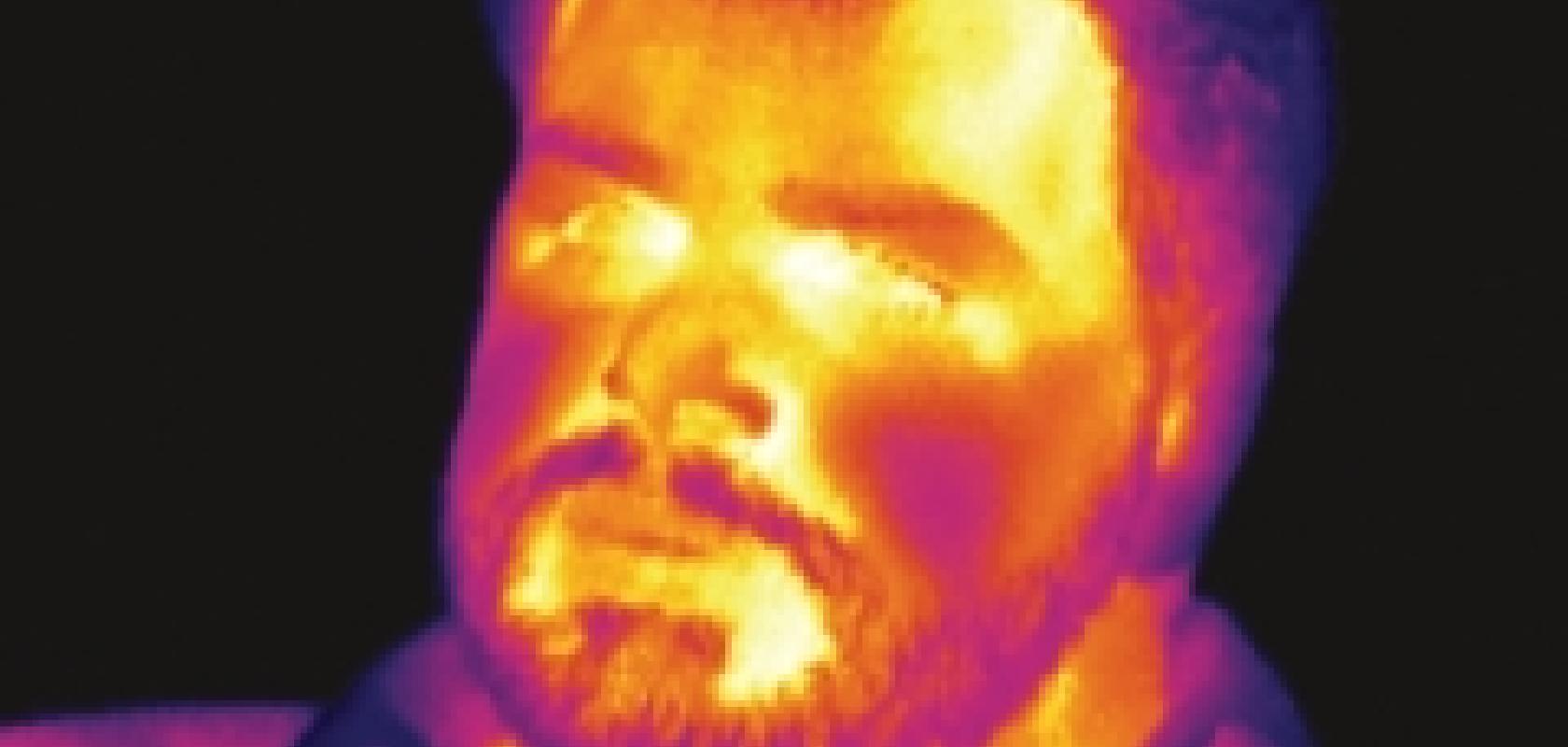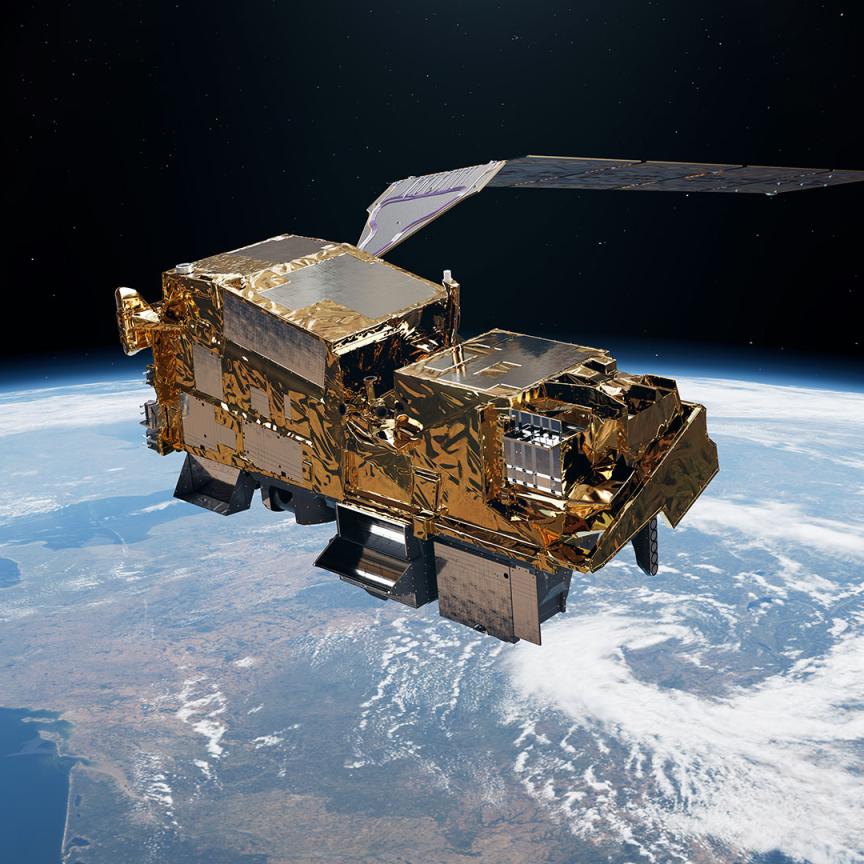Many of the features in this magazine deal with visual data – images that, one way or another, can be seen by the naked eye. But there is a sector of the industry where the technology reveals the unseen, by using temperature as the differentiating factor.
At the outset, it’s worth defining thermography in its truest sense – the term refers specifically to technology that is able to provide an accurate temperature measurement. However, as Mark Williamson of Firstsight Vision, which has recently signed an agreement to distribute infrared cameras for Opgal Optronic Industries, says: ‘Non-thermography cameras are also available, which provide an image based on the presence of heat, but do not necessarily provide a temperature measurement down to a tenth of a degree, for example.
‘Non-thermography infrared cameras have tended to be used exclusively in the military and security fields. Indeed, some manufacturers separate out their sales forces to deal with thermography cameras for industrial use and nonthermography cameras for military use. There is a massive cost difference between the two, however, and we believe that most industrial applications do not really require the accuracy that thermography provides. It can be as much as 10 times the price for a cooled thermography camera, as opposed to an uncooled, non-thermography camera. Such a leap in price is a significant factor for most customers in deciding whether an infrared camera is suitable for their own application.
‘We’ve seen a significant move towards non-thermography cameras for industrial use, as they are very effective at providing non-visual information. For example, in bottling plants where the bottles are non-translucent, there is sufficient temperature difference between the bottle and the liquid itself for an infrared camera to be able to read the fill level – something that no standard machine vision camera or human eye could do. ‘Similarly, if a thermal shock is administered to a structure, an infrared camera can be used to identify any faults by monitoring how the change in temperature is distributed throughout that structure.
‘Other factors, such as increased resolution (up to 640 x 480) and the advent of triggering, has meant that infrared cameras are now a viable option for many machine vision applications.’ From electronics to automotive manufacture, and from nuclear reactors to airbag deployment, more and more markets are waking up to the benefits that this technology can offer.
The steel industry has many health and safety issues, not least of which are the extremely high temperatures in and around the furnaces. With minute differences in temperature of molten steel having a huge impact on the properties of the material, monitoring it as it leaves the furnace is an essential part of the production process. Flir Systems has been involved in supplying its ThermaCam models to Corus, the steel manufacturer.
The ThermaCam SC640 was purchased by the Long Product Rolling Department of Corus R & D, whose function is to improve the process of reheating, rolling and finishing of long products, such as rails. Temperature is naturally a key factor during the rolling process. If the material is too cold the loads and torques generated during rolling are increased, which can damage the expensive capital equipment being used. Furthermore, the temperature at the end of the rolling process has a significant effect on the final properties of the steel.
Another part of the process where temperature needs to be measured against time is cooling the steel. Various acceleration techniques are employed for this purpose, such as forced air or spray cooling. These reduce the temperature of the steel in the optimum time to achieve the desired material properties.
‘We are using the camera to measure the temperature of the rolled steel at any point from furnace dropout, when it is roughly 1,300°C, to the final cold product,’ explains development engineer, Chris Oswin. ‘In the steel industry there are a lot of potential dangers and the higher resolution of this camera allows us to take images further away and in complete safety. The image quality lets us pick out the temperature of particular parts of the sections as they are cooled whereas, with our previous camera, we had to rely on an average temperature reading.’
Electrical faults can be identified using thermal imaging. Image courtesy of Flir.
Thermography is, of course, an established technique employed by Corus, and basically the new device was bought to improve established working practice. However, the driving factor behind the purchase was a project that was going to involve a large amount of work over a period of several months, for which a reliable and compact camera was considered a must. The overriding factors in favour of the model chosen were primarily the video mode and remote control, which would allow the R&D team to conduct more detailed work in compliance with health and safety requirements. The ability of the ThermaCam SC640 to hold a constant resolution across a wide temperature range is especially important as the R&D team needs to track the cooling of a steel product from 1,300°C to ambient.
Flir has also been involved in supplying systems for use with electrical equipment, where maintenance engineers use thermal imaging technology to inspect fuses, connections, cables, transformers, power lines and more to see an anomaly before a significant problem develops. Cedip Infrared Systems is also heavily involved in supplying infrared technology for non-military use. Jon Chicken, from the UK office, says: ‘Thermography has the facility to monitor temperature changes remotely, which has huge advantages in terms of safety and practicality.’
Among Cedip’s recent successes was the provision of a Silver 480M IR camera system to the Department of Gas and Diphasic Thermohydraulics at the CEA (Commissariat à l’Energie Atomique), a French governmentfunded research organisation that devotes its expertise to the development of new technologies, in the fields of energy, health, information and communication. The camera system is being used to study thermal transfers in pipe walls under high-flow, high-pressure and high-temperature conditions.
In a typical gas-cooled reactor the temperature of the fluid lies between 100°C and 350°C, and the temperature of pipe walls varies between 20°C and 800°C. Thermal transfer phenomena on pipe wall surfaces determine the performance and longterm behaviour of the reactor. In order to design and build more efficient, reliable and safe reactors it is, therefore, essential to be able to precisely measure pipe-wall temperatures.
In order to simulate and study the behaviour of hot fluids in pipes, the CEA developed two test rigs that use the Silver 480M camera to measure pipe-wall temperatures, heat exchange coefficients and characterise boiling processes. The first test rig, comprising a heated cell with a sapphire window (transparent in the 3-5μm region), has enabled the camera to visualise and thermally characterise the fluid boiling process. The second test rig, comprising a heated Inconel wall and a heat extractor charged to extract the power generated by the induced Joule effect in the wall, has enabled the camera to measure transient thermal transfers in the wall (2000°C/s). The European Fusion Development Agreement (EFDA) is also using an advanced IR thermography system from Cedip for monitoring the temperature of components inside its Tokamak Fusion reactor at the Joint European Torus (JET) research group based in Abingdon, UK.
The system is being used to monitor the plasma temperature inside the reactor through a set of IR endoscopes. The installed cameras are specially adapted to resist the intense magnetic field generated by the Fusion reactor’s superconductive electromagnets. Installed inside the reactor facility, an area inaccessible during time of operation, the camera will be integrated with the main data processing system of the JET Tokamak for the setting of parameters, synchronising acquisition and gathering of data. Cedip’s 32-bit Altair thermography software will be used to remotely control the camera via fibre optics, as well as transfer and store acquired data.
Thermography can also be used to identify raised body temperature, which helped identify sufferers during the SARS outbreak. Image courtesy of Flir.
A further application for Cedip is at SNECMA (Villaroche, France), a manufacturer of aero-engines, for remote non-contact fatigue testing of engine turbine blades. The company designs, develops and produces engines for civil and military aircraft, launch vehicles and satellites. In order to improve the design of its aero-engines, engineers at SNECMA sought to better understand the behaviour of differently treated engine turbine blades when subjected to extreme vibration testing. To simulate vibration conditions, researchers mounted a turbine blade on a fixed, rigid support and subjected it to powerful pulsated air blasts considerably in excess of what would be encountered in an aero-engine – even in extreme use. Crack propagation was induced by gradually increasing the frequency of the intense air blasts to the resonant frequency of the turbine blade.
Using a Silver 450M thermal IR camera, SNECMA engineers were able to pinpoint the exact stress limit of a range of differently treated turbine blades, as the appearance of a crack is preceeded by a localised heating effect. During crack propagation the temperature at this point rises by several hundreds of degrees. However, as the point is very small and the crack propagation process very fast (a few milliseconds), this places great demands on the IR camera in terms of the need for excellent spatial definition, high framefrequency and large dynamic range (ambient to 800°C).
Using Cedip’s camera, SNECMA engineers were able to precisely focus on microscopic areas of turbine blades then, using the bayonet mounting, quickly change the lens to adapt the field of view for turbine blades of different sizes. Transferring images at a full 14-bit dynamic range, via a Camera Link interface to a remote PC, enabled engineers to record a complete 15-minute experiment with thermal discrimination from ambient to 800 °C.
One other area, outside of security and defence, where thermal imaging is gaining significant ground is in medical applications, where changes in the thermal conductivity of the skin caused by burns, skin ulceration or grafting can be detected and monitored with a thermal imaging system. Indeed, during the SARS outbreak a few years ago, thermal imaging was used extensively in airports to identify passengers with an elevated body temperature. Anyone identified by this method was sent for further medical screening before being allowed to board.
The emergence of infrared applications beyond the military field suggests that thermal imaging is considered as a realistic alternative to traditional visual technologies in industrial markets and beyond.


